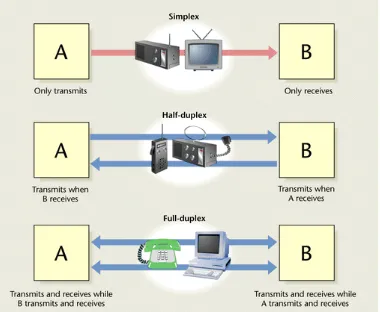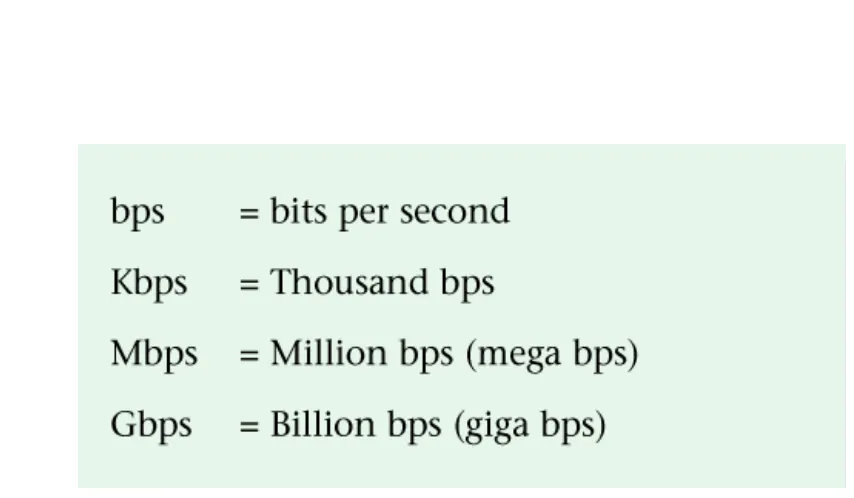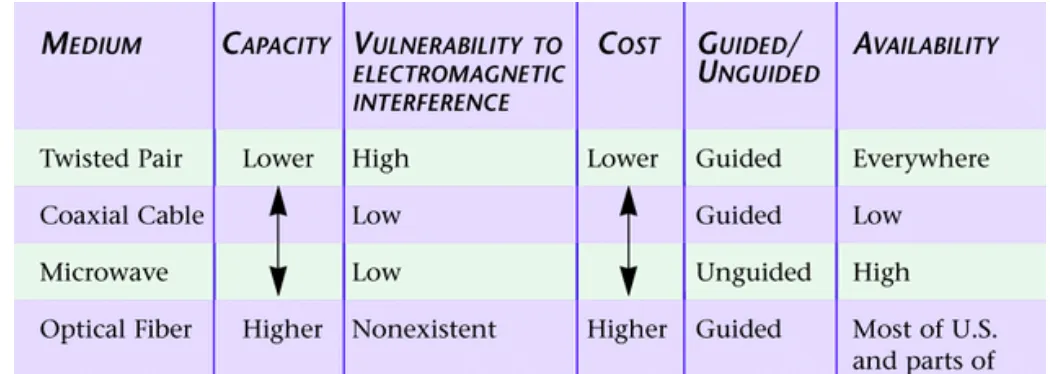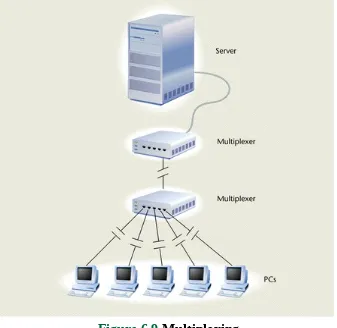1
Information
Technology
2
Learning Objectives
When you finish this chapter, you will:
Recognize why successful managers must be
familiar with telecommunications concepts and terminology.
Know the principles of communication within a
computer system and among computers.
Be able to identify the major media and devices
3
Learning Objectives
Be able to list and explain the functions of
different network layouts and the concept of protocols.
Understand how telecommunications can
improve operations in organizations.
Know the latest developments in
4
Telecommunications in
Business
Telecommunications
Transmittal of data from one computer to
another over a distance
Telecommunications has improved
business in three main ways:
Better communication
Higher efficiency
5
What is Data
Communications?
Data Communications
Any transfer of data within a computer,
between a computer and another device, or between two computers
Two Basic Modes
6
Communication Direction
Three Modes of Communication
Between Devices
Simplex
One-way in one direction
Half-Duplex
One-way in two directions
Full-Duplex
7
[image:7.720.187.567.123.435.2]Communication Direction
8
Communication Direction
Asynchronous Communication
In asynchronous transmission, the devices are not
synchronized by any timing aids.
Advantage of asynchronous transmission
Does not need sophisticated and expensive timing
hardware
Disadvantage of asynchronous transmission
Overhead, time spent transmitting bits that are not a part
9
Communication Modes
Synchronous Communication
In synchronous communication, data are
transmitted using timing devices.
Messages are transmitted in packets.
Advantage of synchronous communication
Overhead in synchronous communication is significantly
10
[image:10.720.116.630.213.297.2]Communication Modes
11
Channels and Media
Communication Channel
Physical medium through which data can
be communicated.
Channel Capacity
12
[image:12.720.117.544.90.339.2]Channels and Media
13
Channels and Media
Media
A medium is any means by which data can be
transmitted.
Transmission speed
A medium’s capacity is determined by the range
14
[image:14.720.125.608.138.407.2]Channels and Media
15
Channels and Media
Twisted Pair
Telephone line made of a pair of copper wires twisted to
reduce electromagnetic interference (EMI) Coaxial Cable
Commonly used for cable television transmission
More expensive than twisted pair
Greater transmission rate than twisted pair
16
Channels and Media
Microwaves
High-frequency, short radio-frequency (RF) waves
Terrestrial microwave
Satellite microwave
Optical Fiber
Fiber-optic technology uses light instead of
17
[image:17.720.95.620.173.360.2]Channels and Media
18
Analog vs. Digital
Analog signals
A continuous series of waves
Digital signals
19
Modulation
Modification of a digital signal into an
analog signal
Demodulation
Modification of an analog signal into a
20
[image:20.720.205.526.128.451.2]Modulation
21
Modulation
Amplitude Modulation (AM)
Frequency Modulation (FM)
22
Modulation
Modems
Devices that modulate and demodulate
signals
Multiplexers
Devices that allow several telephones or
computers to transmit data through a single line
Frequency division multiplexing
23
[image:23.720.206.543.120.448.2]Modulation
24
[image:24.720.128.618.196.318.2]Modulation
25
Networks
LANs (Local Area Networks)
Networks within a building, or within a group of
adjacent buildings
WANs (Wide Area Networks)
Networks that cross organizational boundaries or
reach outside the company
Value-added networks (VANs)
26
[image:26.720.185.619.125.467.2]Networks
Figure 6.11
Where
27
Networks
Network Topology
Physical layout of the nodes in a network
Star
Ring
Bus
28
[image:28.720.190.533.126.455.2]Network Topology
29
Protocols
Communication protocols
Rules governing the communication between
computers or between computers and other computer-related devices
Network protocols
30
[image:30.720.161.615.133.415.2]Protocols
Figure 6.13 Some communications software allows a user to establish protocols: bit rate, parity, number of data bits, stop bits, and a
31
Protocols
LAN Protocols
Polling
Contention
Token passing
WAN Protocols
OSI (Open Systems Interconnection)
Standard protocol model
32
[image:32.720.159.535.120.460.2]Protocols
33
Switching Techniques and
Transfer Modes
Circuit Switching
Message is communicated in its entirety from the
transmitting computer to the receiving computer
Packet Switching
Message is divided into packets of bytes and
34
The Changing Business
Environment
Cellular Phones
Teleconferencing
Voice Mail
35
Ethical and Societal
Issues
Telecommuting: Pros and Cons
Pros
Saves travel cost and time Decreases pollution
May reduce unemployment.
36
Ethical and Societal
Issues
Telecommuting: Pros and Cons
Cons
Employers tend to pressure
telecommuters to work harder than workers in the office.
No office to foster new social ties and
camaraderie.
May negatively impact some
segments of the economy
Restaurants









